Winter Camp in a Seared Desert… Mojave Preserve
In August of 2023, the York fire ignited in the northeast Mojave Preserve. It would eventually burn more than 93,000 acres (about 150 square miles), and the cause has never been determined.
Having gone through the CZU complex fire in our own Santa Cruz County (2020), I’m no stranger to scorched landscapes. But a fire in the desert, well, it’s almost counter-intuitive. There just doesn’t seem to be that much to burn, and the vegetation is so widely separated, it’s hard to understand how a fire would spread. But spread it did, with a fierceness that can best be understood by viewing a few of the many videos from that month. Do a Youtube search for “york fire california”.
I wanted to see for myself what the aftermath of a desert fire looks like, get a feeling for the kind of damage done, and try to understand how long the slow-growing environment might take to recover.
So off we went, in Howie our motorhome, with Jayk our jeep in tow.
After Christmas with family in Las Vegas (a lovely time), we headed south on US95, gassed up in Searchlight, and rolled into the Preserve on highway 164. This highway is fairly busy for a lonely desert road; it serves as a shortcut from I-15’s turn to the north, over to US95. This handy route changes a 100-mile drive into 32, so anyone wanting to go south out of Vegas on US95 can likely choose 164.
That said, 164 was very uncrowded, compared to US95. Moving westward, we took our time. The desert there is vast and unpopulated, and (after a week in a Las Vegas residential area) we relaxed and enjoyed the space.
We didn’t know it at the time we passed through, but that area, plus other parts of the Preserve, is home to one of the largest Joshua Tree forests in the world (larger even than Joshua Tree National Park).
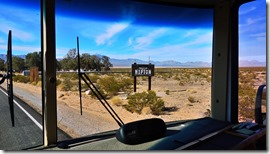 Twenty-one miles west of Searchlight is the oh-so-cool town of Nipton, just off the northeast corner of the Preserve.
Twenty-one miles west of Searchlight is the oh-so-cool town of Nipton, just off the northeast corner of the Preserve.
It’s truly a don’t-blink-or-you-miss-it little settlement, that has had what can only be described as a colorful history. Mining, family homesteading, cannabis tourism, and (now) artists’ retreat, are a few of the many phases the town has gone through. On the edge of town, the Union Pacific railway has freight bustling by on a regular basis. Well, “regular” is probably a few times a day.
Another unique feature along this highway is the tantalizing view of the distant solar array, just the other side of I-15, southwest of Primm. It’s the Ivanpah Solar Power facility, and it’s both enormous, and highly visible. The visibility stems from its architecture: it’s not a photovoltaic array like you might have on your roof. It’s a group of three reflective arrays, using steerable mirrors, which focus sunlight on a steam-turbine heating tower; the turbines run big power generators. We could barely spot it from 164…
…but it was clearly visible later in our trip, from higher ground…
We drove out of Nipton, towards I-15, but soon turned away from the power facility, and drove southbound down Ivanpah Road. We headed directly toward the New York Mountains, where the fire had raged. Good ol’ Google Maps told us the road was still closed, but I had determined in advance from the Preserve website that it was open. It was only rough gravel, but it was a road.
[We talked later to a Ranger, and she told us that re-paving was likely not to happen in any foreseeable future. Just not enough funding.]
While in Vegas, we had made casual, “maybe” arrangements with Karin’s brother and his wife, to meet somewhere in the Preserve if things worked out with our respective travels. They have a Jeep and a trailer, and enjoy the desert as much as we do.
As it happened, things worked out perfectly, and we drove right up to their camp on the western slope of the mountains, Siegy waving his arms in welcome. We both got nicely parked in the vicinity of the old Goldome Mill and Vanderbilt mine works, but far enough away to enjoy the openness of the desert.
Cozy, comfy, and even having some extra family time, we settled in to enjoy and explore.
My personal good news is that my Lyme disease has subsided somewhat in the last year or so, and that has freed me to (once again) be able to take longer walks/hikes in the desert. It’s an abiding joy, not to have to turn back to camp after a few hundred yards of limping. I’m deeply grateful.
We inaugurated my recovered freedom with a hike up to one of the many, many mining areas in these mountains. As we walked, we entered the fire zone, and were able to get right next to many of the burned shrubs and trees. It was kind of sad, but it also held a certain stark beauty; harshness overlaid on harshness. The desert is always a hard place; it’s even harder when it’s been burned to a crisp.
We couldn’t help but notice, in the scant six months since the fire, green shoots were already beginning to emerge, especially from the charred mesquite stumps. Perhaps the recovery will go well? Dunno.
A mile or two along our “trail” (an old mining road), we found an impressive mineshaft, with scaffolding still remaining.
For any mine shaft with real depth, it’s pretty much impossible to tell how deep it really is. But that never stops us from creeping up and looking into the dark abyss.
As I got closer to the shaft for a better picture, a huge pale white owl suddenly emerged from the shaft, startling me so badly I forgot to snap a picture. I could hardly believe what I was seeing… He seemed to levitate out of the black hole, a flying magician, barely flapping his bedsheet wings. He flew easily upward in absurdly tight circles, calmly avoiding the rocky walls and steel beams. All the while, he stared at me, owlishly (duh), as if to say “Why’d you have to wake me up?”, and then off he flew across the rugged slope.
We climbed around the mining area, looking at the leavings of the miners, marveling as always at the incredibly hard work that it took to dig, frame, cart away ore, and survive the desert. Tough men.
Speaking of hard work… right at the edge of our camp, a big stone wall was built, with only hand labor, block by block. We stared at it for a long time, and tried to imagine, not only the work involved, but also what in the world it was FOR. The best we could figure was some kind of loading dock.
There was a concrete, dish-shaped depression at the base of the wall, now filled with earth and rocks, barely distinguishable from the desert itself. Again, a mystery.
BIG LITTLE MINES
On one of his hikes, Siegy had seen some mine shafts way across the main road, far enough distant to take the vehicles for a jaunt. We worked our way along some not-too-rough jeep/mining roads, knowing that at least one of them would end up at the mine features we’d seen.
Sure enough, one road took us right to the mines. Here’s a view from the mining road/platform; you can kind of get the lay of the land… two Jeeps parked at the lower right; Ivanpah Power facility showing just above the nearby cinder-cone peak; dirt-road jeep-trail heading back to the main road. Our camp is up against the slope on the right in the medium distance (not visible in the photo).
The first mine shaft was a really big one, very solid and safe – so I backed Jayk into it for a click-bait shot.
Some of the other shafts were way too sketchy to explore…
So what was the name of this mine? We couldn’t find out. Sometimes, especially with the large mines that made a big haul, sponsored a township, boomed and busted, it’s easy to get the history. But on relatively small digs like this one, it’s very hard to scrounge up any detailed information.
Speaking of big mines, we did some brief exploring of the Vanderbilt area, just a couple of miles north of camp. Jeep access was pretty decent… well, for a while. The track appeared to be the remainder of an ancient railway bed, fairly level and narrow.
Then, the old railway got a bit more snug. Rocks and talus had slid down the slopes and covered up the roadway. There were also filled-in spans between the gouged-out cuts, and they had gotten to be only about 6-7 feet wide – same or narrower than Jayk’s tires.
And then things got really damn tight. No roadway remaining at all, not even tire tracks. Brush, branches, and rocks cluttering any/every passage. Possible to get through, but TONS of work to do so. Time to turn around.
For all this work, we relied on our offline maps; this area looked like this.
Maps are interesting, occasionally useful, and even accurate now and then. We’ve learned to use multiple map sources… and never to trust a single one of them.
GOLDOME MILL
When does graffiti become art? Hmmm. I suppose it’s when the observer says so.
Goldome was a large gold-ore processing mill, devoted to the Gold Star Mine (Vanderbilt-owned). Relatively new by desert standards, the mill was in operation from the late-80’s to the late-90’s, and the somewhat modern construction (lots of metal) makes it unique when compared to the old turn-of-the-20th-century wooden remains elsewhere in the Preserve.
When the Preserve was created (1995), the new restrictions for land use pretty much put mining and ranching out of business. Quite a burden on people who made their living there; but a boon for the desert ecology and lovers of untrammeled space.
It’s curious though, how we seem to be drawn equally to the uncivilized wildness, and yet as well to the leavings of prior civilizations. I know that we enjoy seeing the results of the amazing, strenuous labors of long-gone miners; but perhaps we also enjoy the evidence of the impermanence of human influence?
OK, enough philosophy…
Today, much of the mill’s structure is still standing, and solid enough to (carefully) roam through it. And “roaming” has obviously included “leave your mark” for some folks, for the installation is literally covered, from ground to rooftop, with various paintings and markings. In fact, it’s hard to figure out how the “artists” actually physically reached some of the areas that are so festooned with paintwork. Did they truck out a 30-foot extension ladder so that they could spray-paint their inspirations way up on the high walls?
Coming up to the property, there wasn’t a lot to bely what we were about to see… a sun-beaten metal building, doors askew or missing, and some kind of mural on one wall.
But then, the colorful storage tanks let us know what we were into.
An equally-decorated fuel tank stood alone on the back area of the platform.
Inside, the artists had run rampant. The assortment of paintings must have taken months, if not years, to complete. There is virtually no wall or structure left un-touched.
But in fact, some areas are not as… uh… “adorned”, as others. This leads me to wonder whether the work is still in-process, and the artist(s) might return to expand their work?
Out back, some processing and handling equipment is still standing.
And in front, there’s a long gantry over a big steel tank. Also amply decorated.
Out at the northwest corner of the property, somebody has apparently taken up residence. Caretaker? Squatter? Artist? Dunno. Definitely more than just passing through, with even a parked fishing boat. They never showed up while we visited, so we can only guess. We were quite respectful of course, and did not wander through their space.
Overall, the old mill is quite a unique “desert scene”. And it was yet another surprise for us, after many visits to the Preserve. It seems we always are finding something new (to us) with every trip.
CARUTHERS CANYON
All around our camp area were burned trees and shrubs, ample evidence of the York Fire. But nowhere in the mountain range was the impact of the fire more striking than where it started, in Caruthers Canyon. Until the fire, Caruthers was an island of rich botany, a fabulous collection of desert flora unlike anything else in the entire Preserve. Sadly, this bounty is now baked black, lost if not forever, perhaps for a very long time. The ink-black skeletons of the pinion pines, junipers, and mesquites are all that remain of what was an almost tropical-like paradise.
The Canyon was a bit of a trek from camp, maybe 20 miles or so. Most of the distance was on the good-quality Ivanpah Road. Then, there’s an easy dirt road, 2-wheel-drive capable, that goes toward the Canyon, and then the (final) Caruthers Canyon Road. But we chose (by accident actually) a gnarly side turn-off from Ivanpah, that wove through the nearby terrain. It wasn’t Google Maps fault this time, it was just me. Mea culpa. Slow, gnarly, rugged… which is to say, wonderful.
A few miles away from the Canyon, a burned-dead juniper sentinel warned us of what was coming.
We turned northward on the Canyon road, and soon the devastation was everywhere; nothing had escaped. (The dried grasses in the foreground grew up after the fire, and dried when winter set in.)
Working our way through the once-lush forest was a spooky affair.
Far up the Canyon, the spur road ends at a used-to-be-lovely picnic spot. A ridiculously precarious balanced rock was apparently unscathed by the fire.
We wandered through the Canyon, with the roads getting far worse toward the northeastern end. All the missing vegetation makes for more aggressive water runoff, chewing up the terrain. This makes for strictly 4WD roads, if at all.
Finally, we reached one area that had been oddly spared by the fire. Under the overcast sky, the scene still remained somber; and it took only a brief side glance to be made acutely aware of the surrounding incineration.
We reversed course and headed back toward camp, both saddened and impressed by what we’d seen.
Explorers should always be aware that four-wheeling in remote back-country is fun, exhilarating, soul-satisfying… but not without its risks. On the way out of the Canyon, we chanced upon these guys, doing some “trail-side repairs”. Their Toyota got flustered by a big ditch, taken at slightly too-high a speed, and literally exploded its front differential; there was a tennis-ball-sized hole in the case. The front wheels simply refused to roll. The car could not be driven or towed; they were seriously stuck.
Their solution? Use their jacks, tools, and know-how… Take the front end completely apart, disconnect the axles and driveshaft, then re-assemble the whole affair… and limp back to civilization in two-wheel-drive.
Creative, and far less expensive than an off-road tow, if one could even be arranged. “Necessity is the mother of invention.” Indeed.
So what is to become of Caruthers Canyon? Clearly, the weather and terrain, which sponsored the rich growth, will continue of course; and small resurgences in plant life are already visible. But the blackened trees and burned stumps will visually dominate the scene for years to come; my sense is that they’ll take a LONG time to crumble away.
I’ve not been able to find any recent information (February 2024) on Canyon restoration activity, either natural or assisted. I suspect that many decades will be needed for the place to achieve anything akin to its former grandeur. If you’d like to see what Caruthers once was, search Youtube; there are many videos of the beauty of Caruthers Canyon before its fiery demise.
VARIETY in the PRESERVE
I’d like to just briefly note that, while the mining history in the Preserve is always fascinating, and we spend a ton of time looking at old digs and mills, there’s a lot more to this very large National Monument.
Sand dunes, cinder cones, hot springs, lava tubes, dry lakes and wet rivers… the Preserve has a fabulous level of diversity, which is why we keep going back.
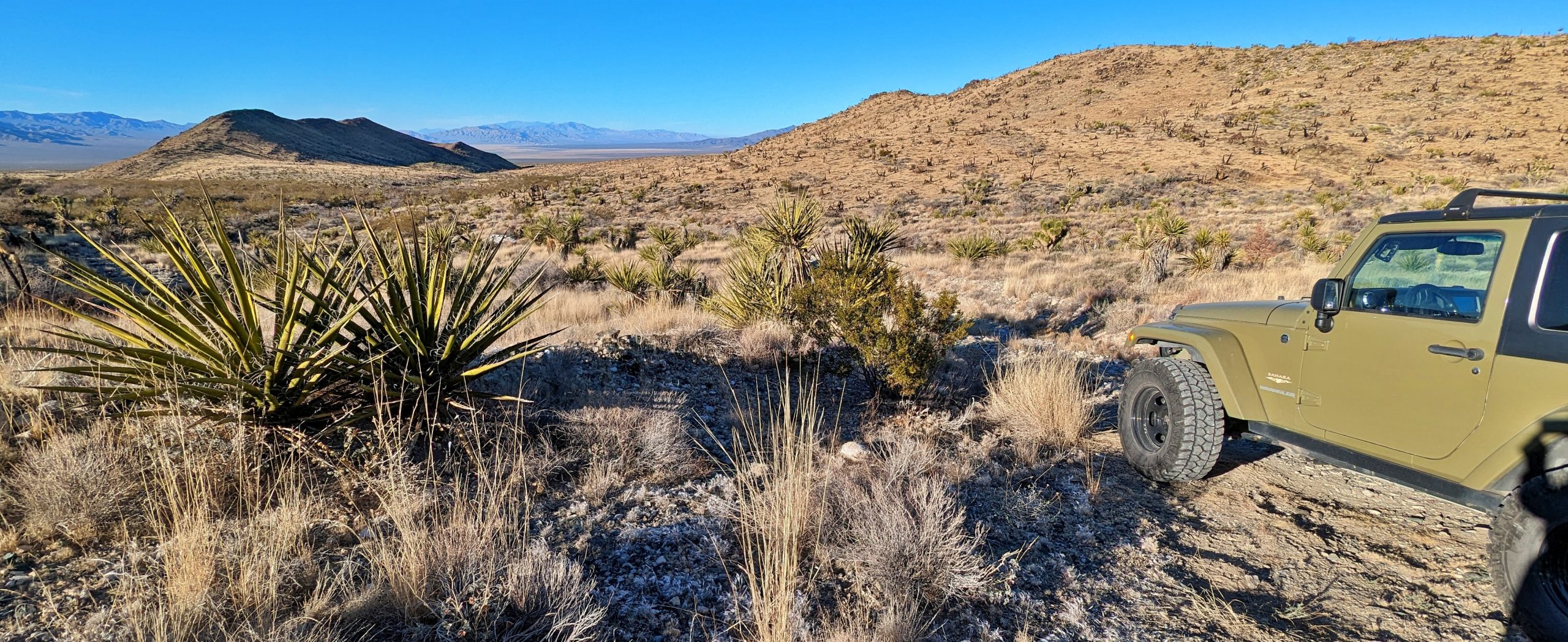
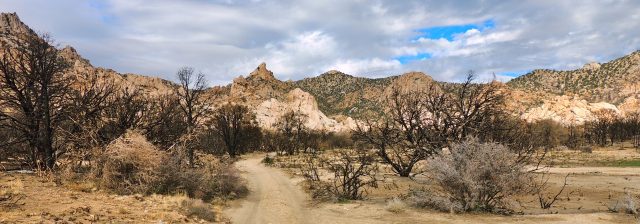
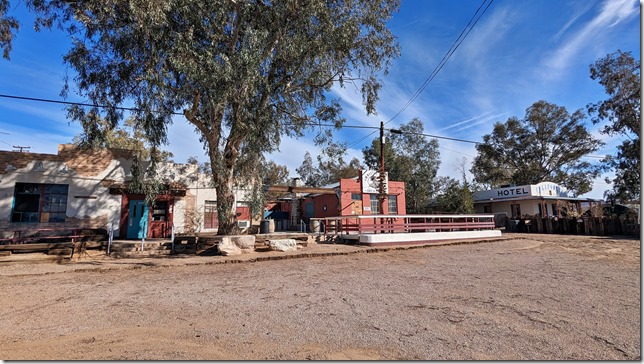
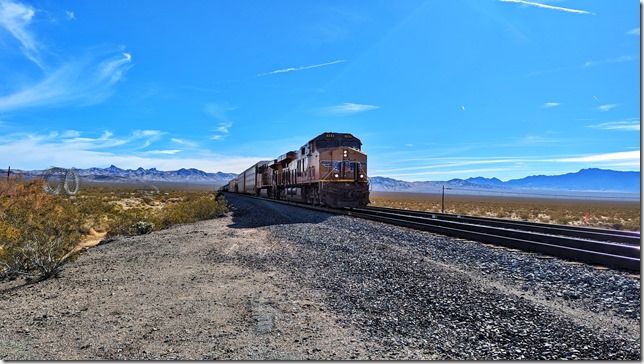

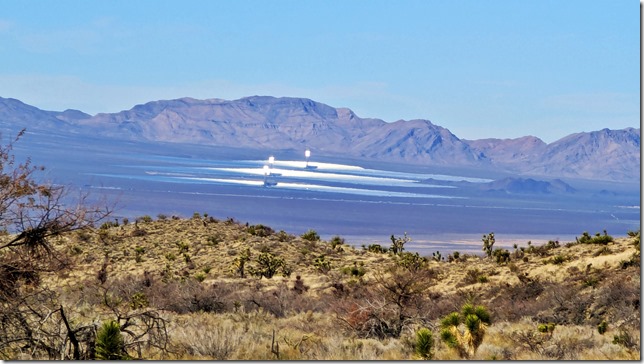
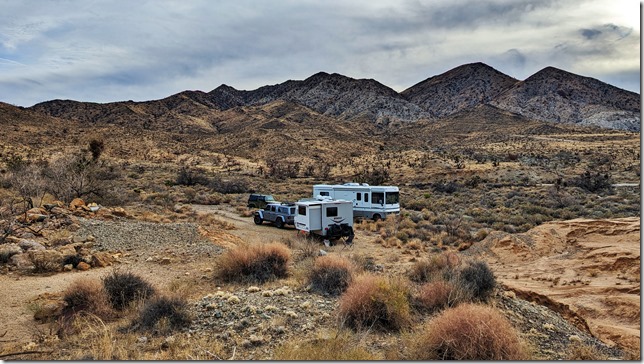
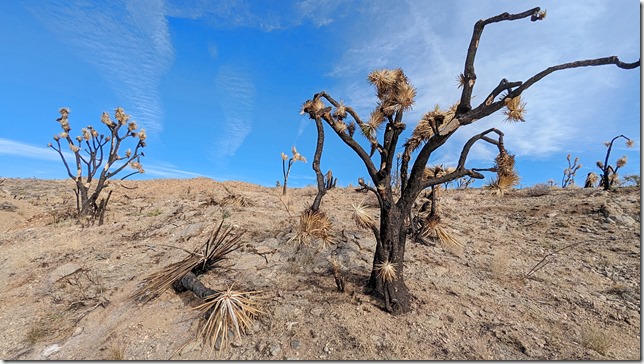
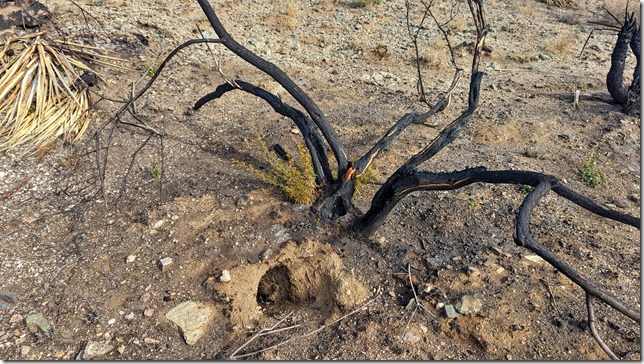
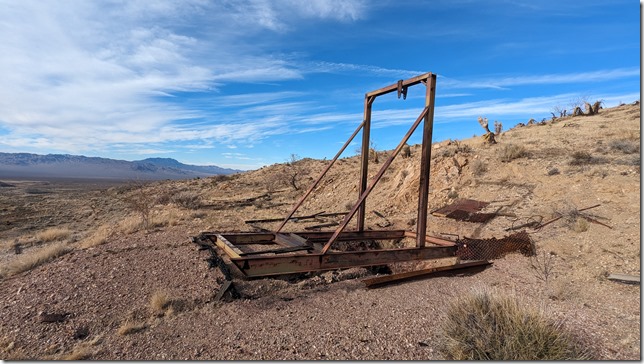
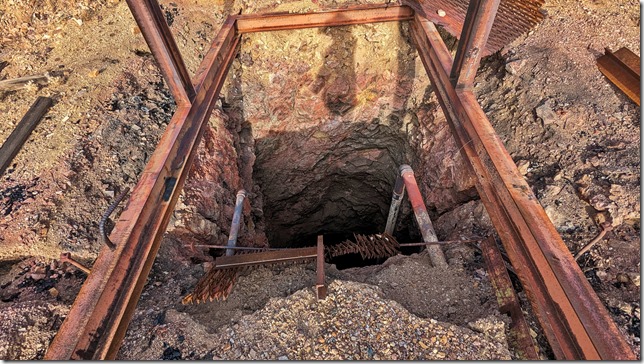
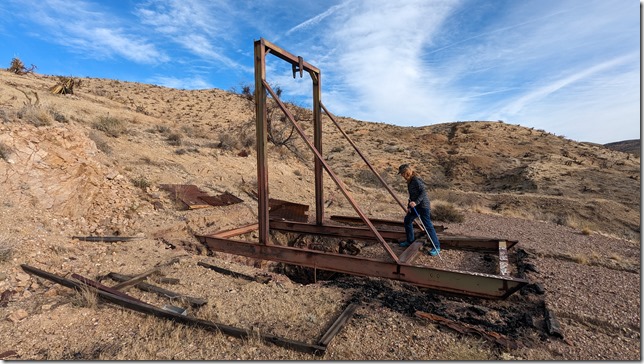
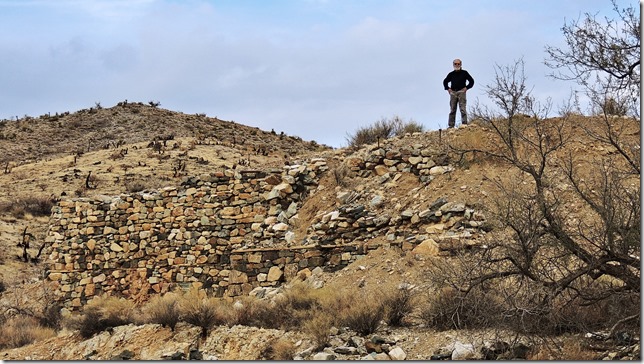
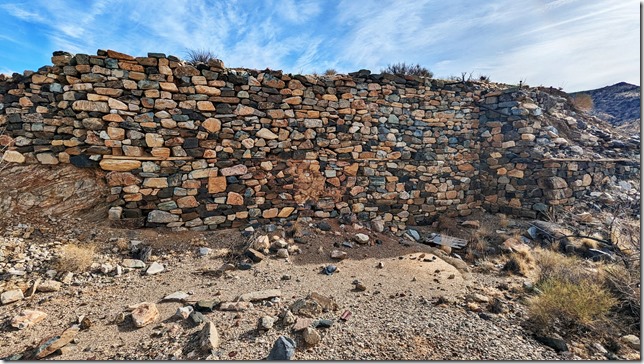
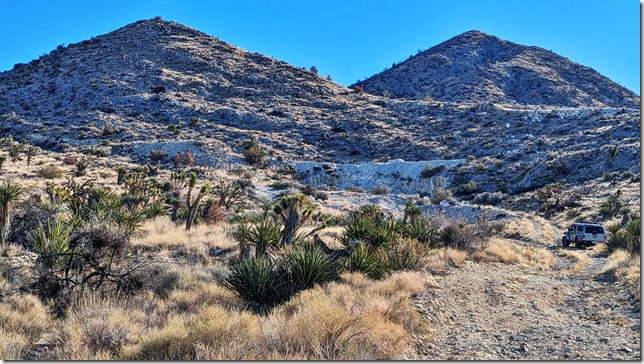
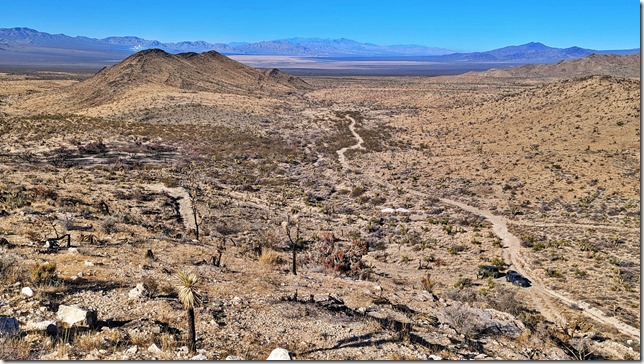
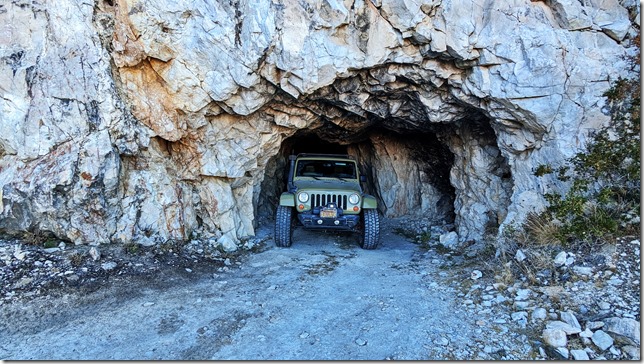
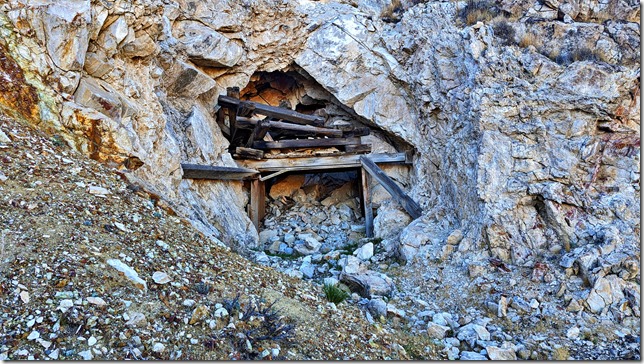
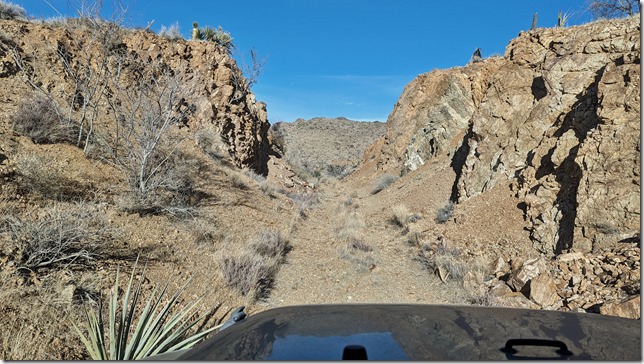
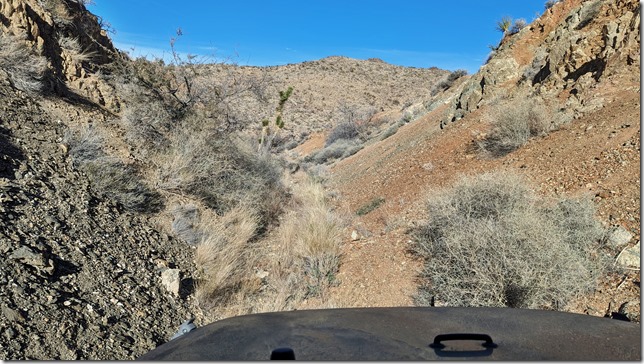
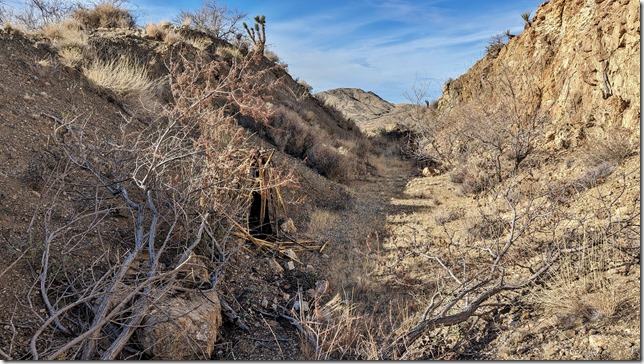
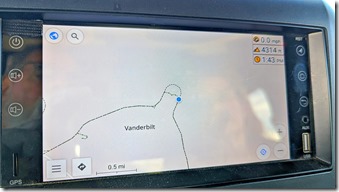
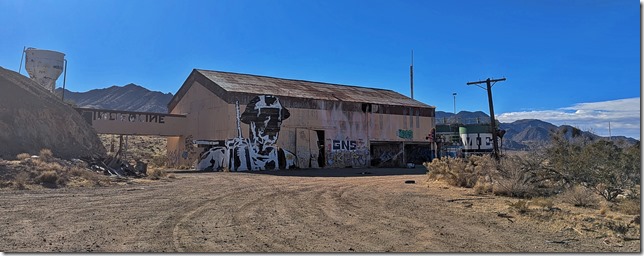
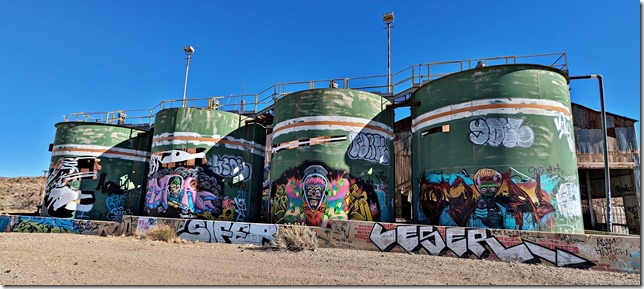
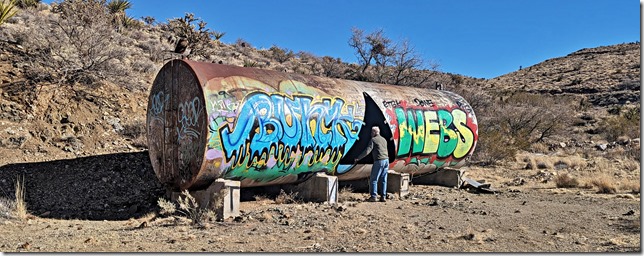
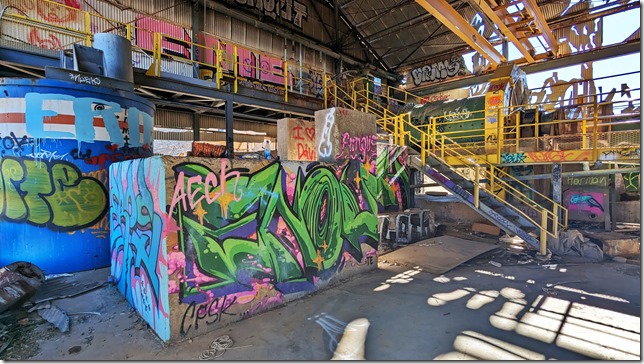
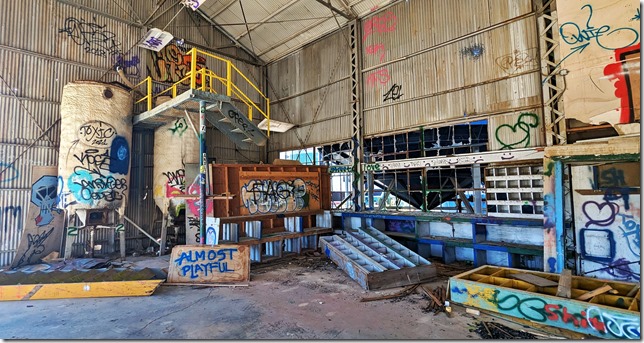
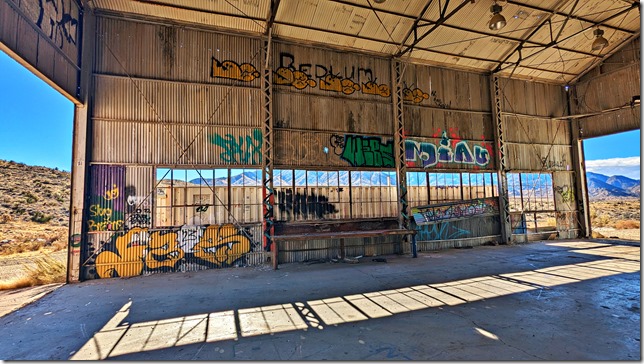
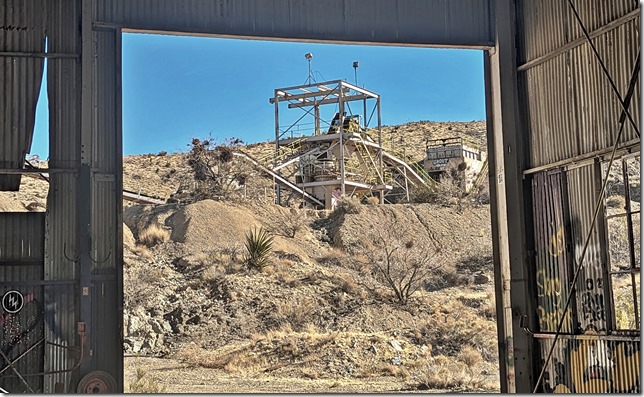
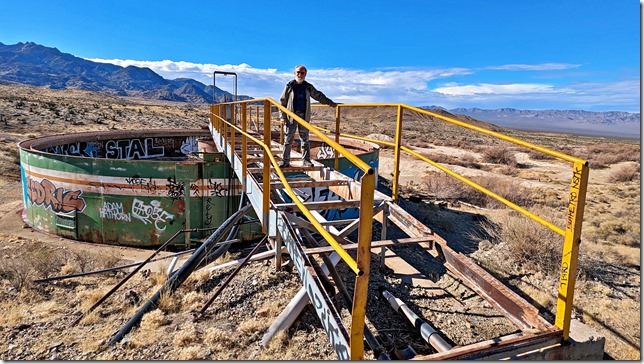

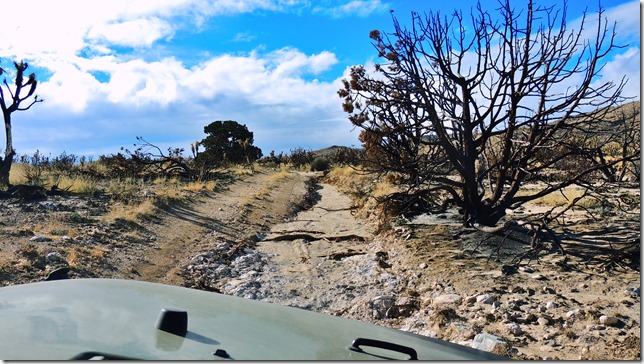
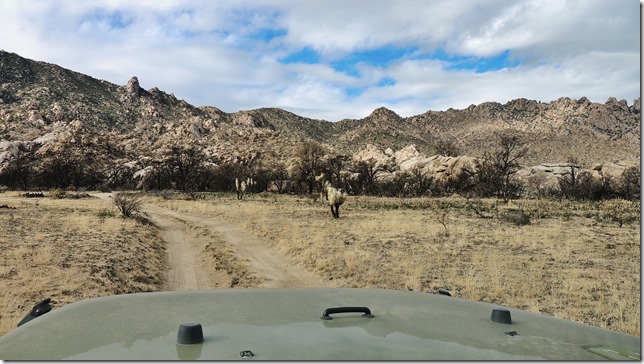
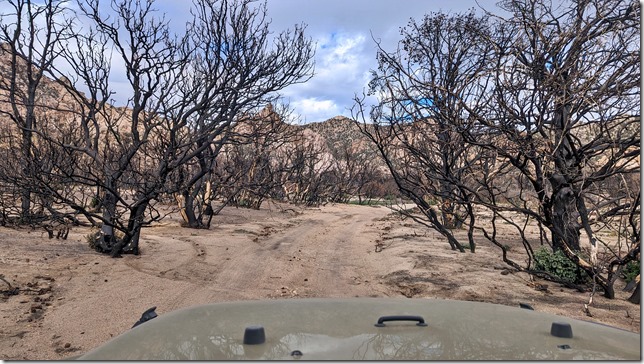
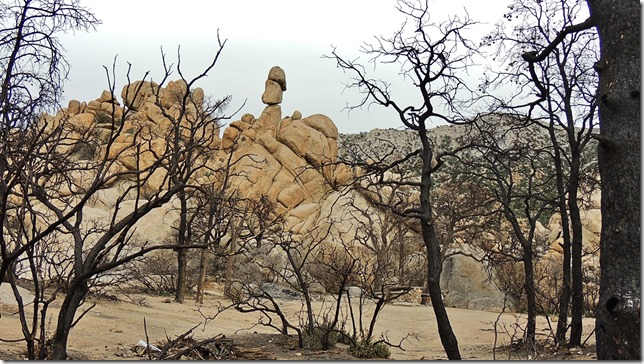
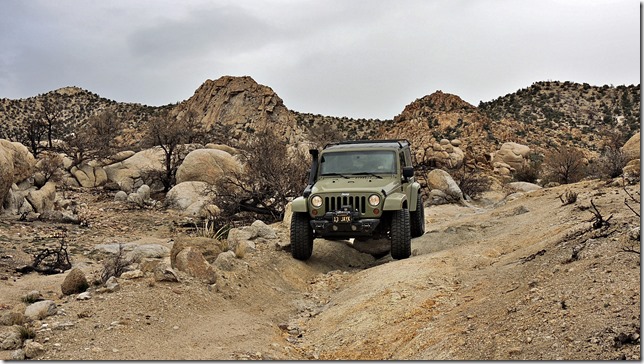
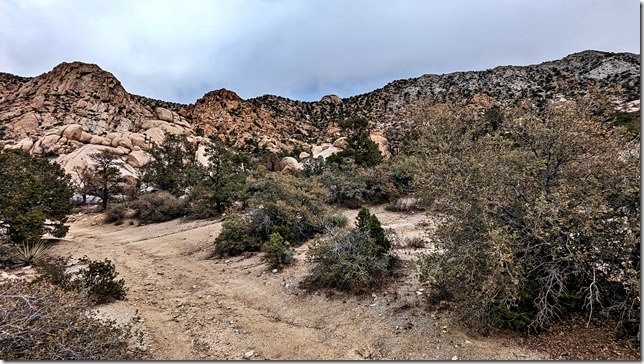
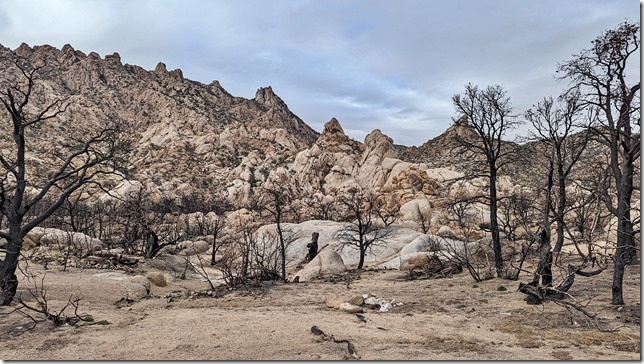
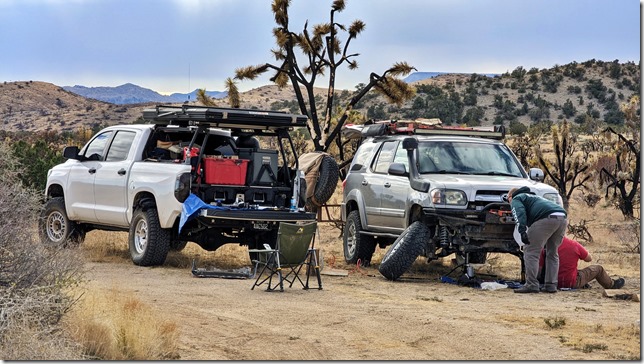
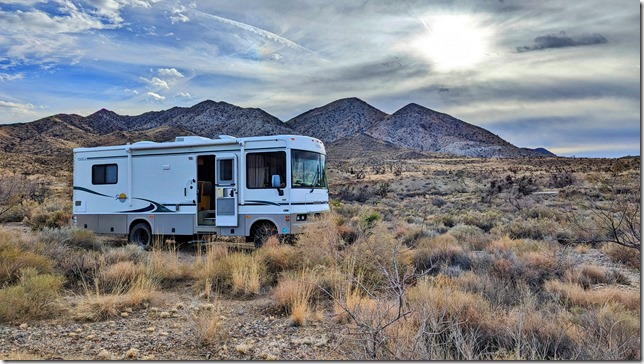
Good to have you back, Greg. We always enjoy your blogs. Give our love to Karin.
Dick and Ann Wells
Happy travels. Always look forward to reading and viewing your exploits. Thank you for doing this….
Wow – a lot of great adventures!
Thanks!
Peter
Love it and the pictures